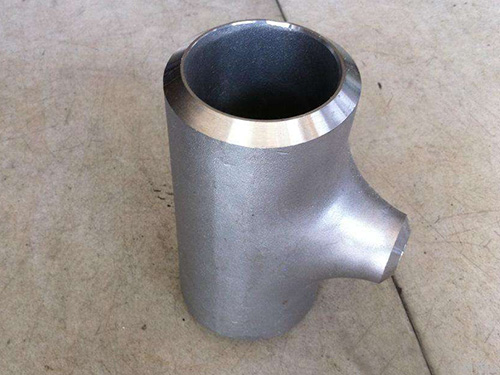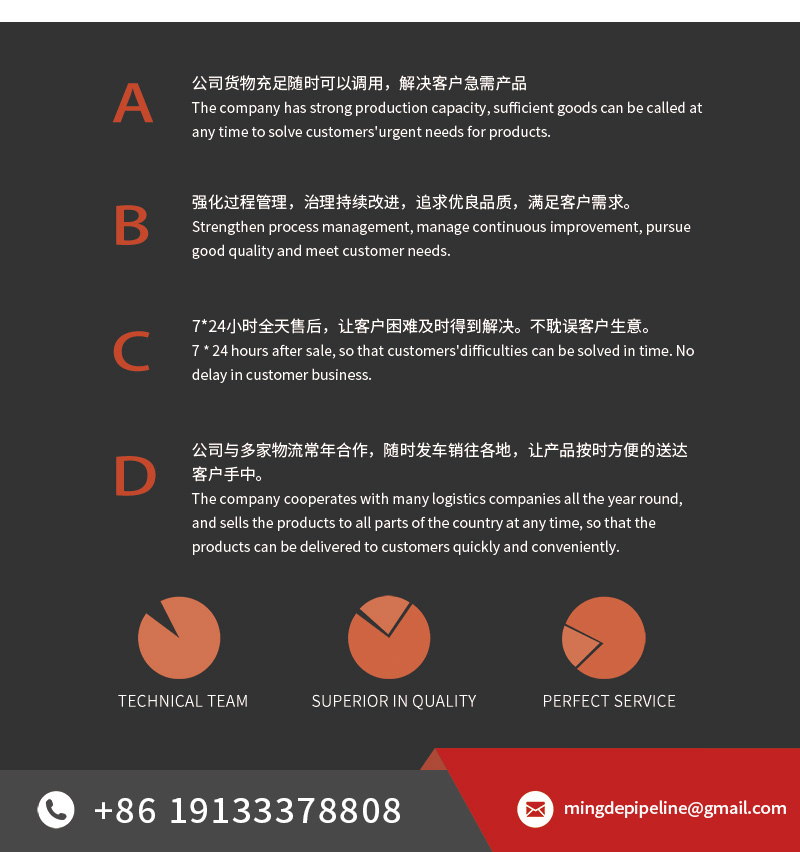
reducing tee

A reducing tee is a specialized type of pipe fitting used to connect three sections of pipe—two of the same size and one of a smaller diameter—within a piping system. It is designed to facilitate a 90-degree branch while simultaneously accommodating a change in pipe size. Reducing tees are critical components in industrial and commercial pipeline systems that require both flow distribution and size reduction in a compact, efficient manner.
This fitting features a “T” shape with two outlets of the same size and a third outlet (the branch) that is smaller, allowing for a seamless transition between main and branch pipelines. Reducing tees are widely used in industries such as oil and gas, petrochemical, power generation, water treatment, food processing, and HVAC systems.
Functional Overview
The reducing tee allows for fluid, gas, or slurry to flow through a main pipeline while also redirecting a portion of that flow into a secondary line with a reduced diameter. This branching capability is essential in systems that require multiple distribution points, pressure regulation, or flow division to different process areas.
The main advantage of a reducing tee lies in its dual function: it not only creates a branch connection but also accommodates a size transition without the need for multiple fittings. This simplifies installation, reduces material costs, and enhances system reliability.
Material and Construction
Reducing tees are manufactured in a wide range of materials to suit different applications and working environments. Common materials include:
Carbon Steel – Suitable for general industrial use, known for strength and affordability.
Stainless Steel – Offers excellent corrosion resistance, ideal for food-grade, chemical, and high-humidity environments.
Alloy Steel – Designed for high-temperature and high-pressure applications.
PVC, CPVC, HDPE – Used in non-metallic pipelines for water, chemical, or drainage systems.
Surface treatments such as pickling, galvanizing, painting, or coating can be applied to enhance corrosion resistance, depending on the service medium and environment.
Key Advantages
Efficient Flow Transition
The reducing tee ensures a smooth transition in pipe size and direction, helping to maintain consistent flow characteristics and reduce turbulence.
Space-Saving Design
By integrating the branch and reducer into a single fitting, it minimizes the need for multiple joints and components, saving space in compact systems.
Versatile Applications
Suitable for use in high-pressure, high-temperature, and corrosive environments. Its design is compatible with a variety of fluids including water, gas, oil, steam, and chemicals.
Cost-Effective Installation
Fewer fittings and welds mean less time and labor required for assembly, resulting in reduced installation costs and maintenance effort.
Structural Integrity
Reducing tees are designed to withstand internal system pressure and external mechanical stress, offering long-term reliability and performance.
Common Applications
Oil and Gas Pipelines: Used to branch off main lines and reduce pipe sizes in processing plants and refineries.
Water and Wastewater Systems: Helps in directing flows between pipelines of different capacities.
Chemical Processing: Installed in systems that transport corrosive fluids and require controlled flow paths.
Power Plants: Employed in boiler and cooling systems to manage steam or cooling water distribution.
Pharmaceutical and Food Processing: Used in sanitary systems where corrosion resistance and hygiene are priorities.
Fire Protection and HVAC Systems: Facilitates the distribution of water or refrigerants in commercial buildings.
Connection Methods
Reducing tees are available with various connection types including:
Butt-weld – For strong, leak-proof, and permanent connections in large-scale industrial systems.
Threaded – For smaller pipelines and easier disassembly or maintenance.
Socket-weld – Used in high-pressure applications where compact fittings are needed.
Flanged – Suitable for systems requiring frequent inspection or component replacement.
Conclusion
The reducing tee is a practical and reliable pipe fitting essential for modern piping systems. Its ability to merge the functions of branching and reducing pipe size into a single component makes it an efficient solution for managing flow transitions in complex networks.
Engineered for durability and versatility, reducing tees are available in a variety of materials, shapes, and connection types to meet diverse industry needs. Whether used in heavy industrial plants or precision chemical systems, the reducing tee ensures optimal performance, reduced installation time, and long-term operational safety.

 NEWS
NEWS
-
Lightweight Pipe Insulation Bracket Materials and Manufacturing Technology
2025-10-18 09:18:46
-
Industrial Safety Applications of Fire-Resistant Pipe Insulation Brackets
2025-10-17 09:06:27
-
Selection Guide for Insulation Brackets in High-Temperature Steam Pipelines
2025-10-15 09:30:05
-
Pipe Insulation Bracket Design and Safety Requirements for Petrochemical Plants
2025-10-14 07:34:37
 Contact us
Contact us
Mobile:+86 19133378808
Email:mingdepipeline@gmail.com
Website:https://www.mingdepipe.com
Address:Zhenggang Industrial Park, Yanshan County Economic Development Zone, Cangzhou City, Hebei Province




